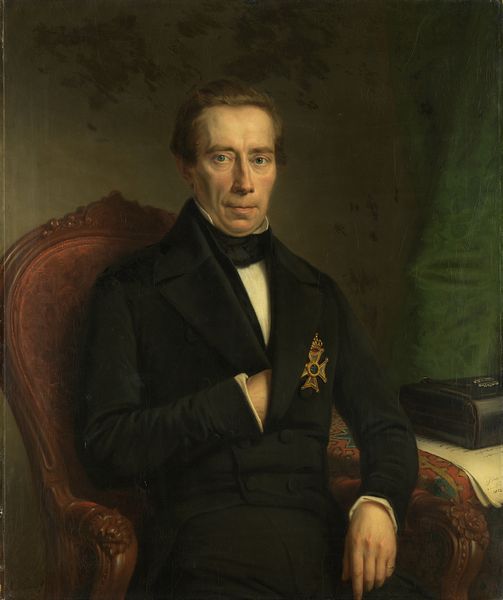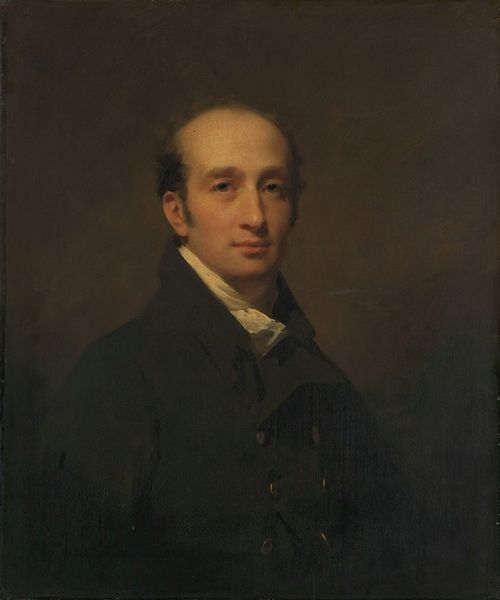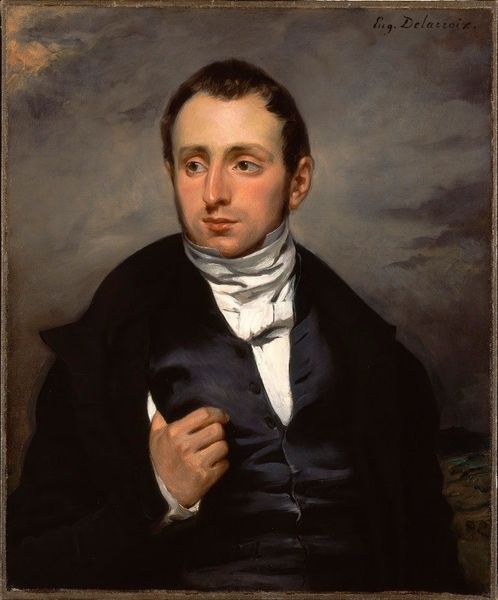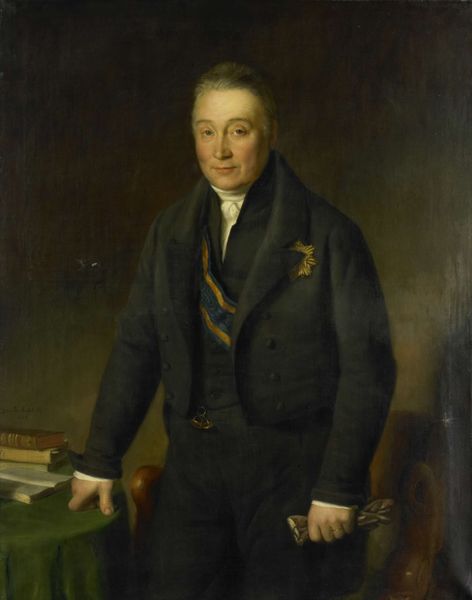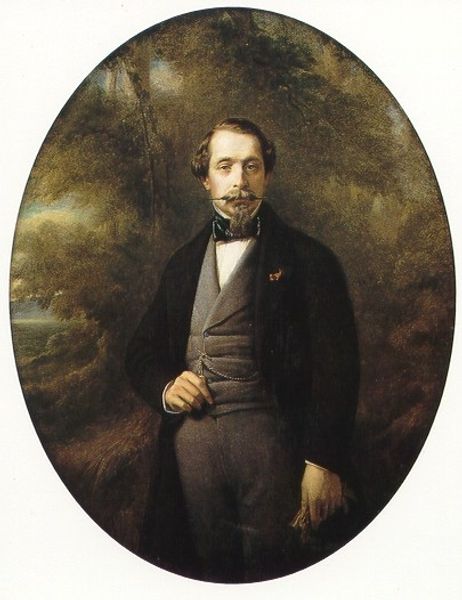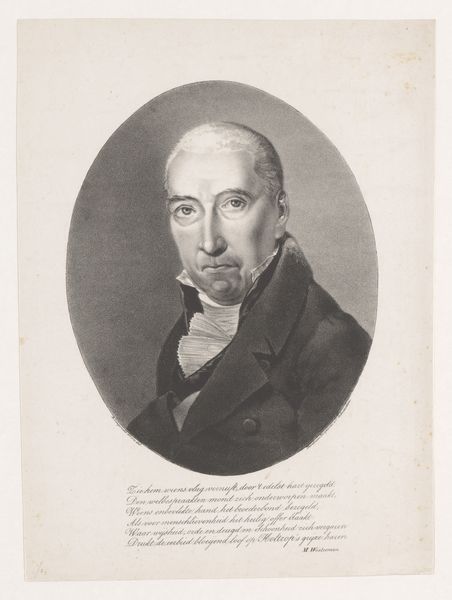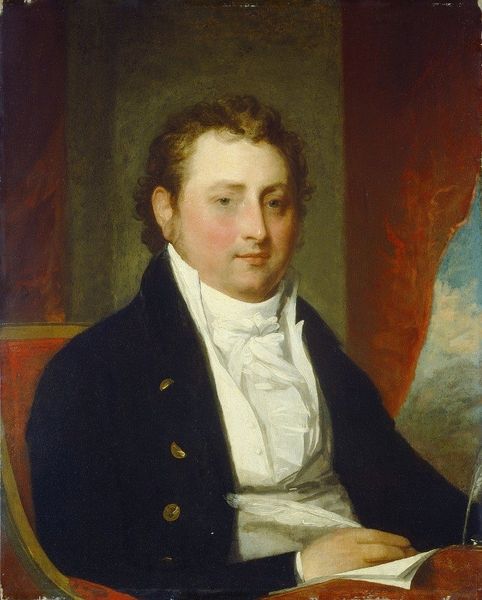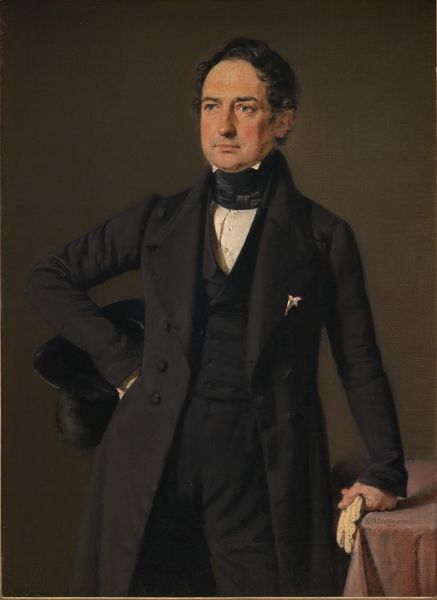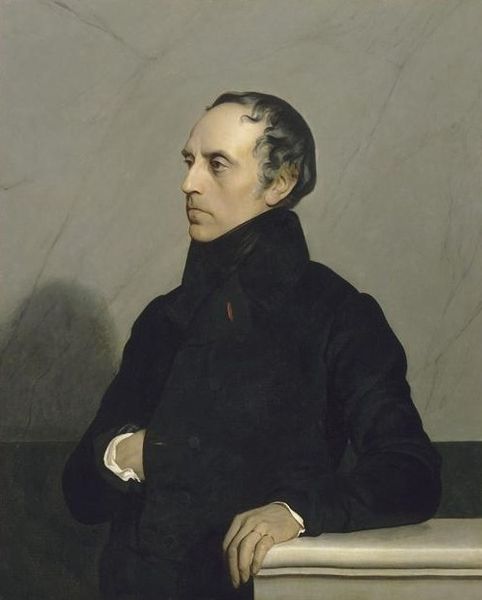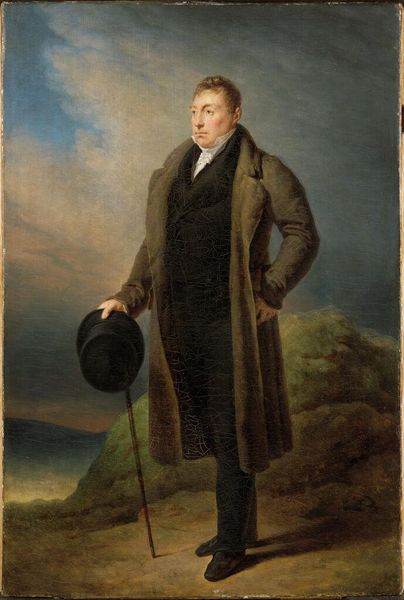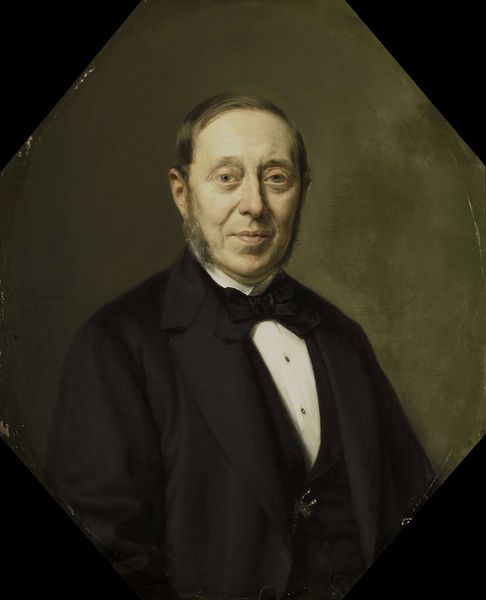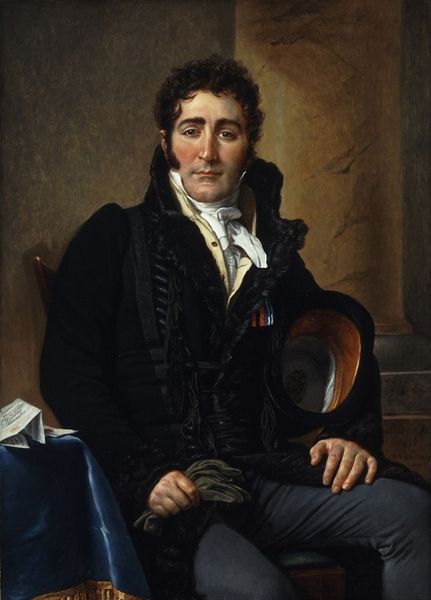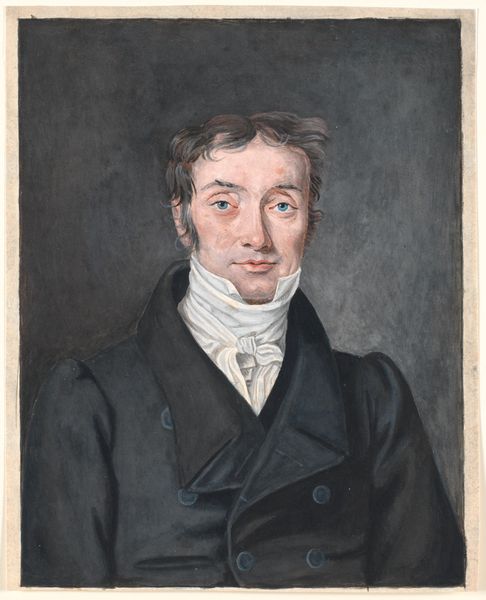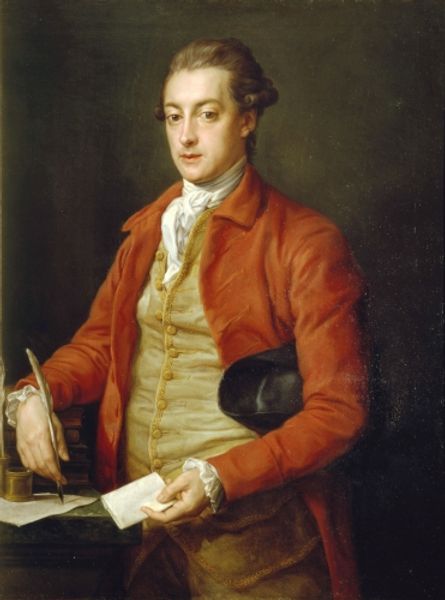
Portrait of Jacob de Vos Jacobszoon (1803-1878). Amsterdam Art Collector and Owner of the Historical Gallery De Vos 1860
0:00
0:00
Dimensions: height 140 cm, width 104.5 cm
Copyright: Rijks Museum: Open Domain
Curator: This is a portrait by Nicolaas Pieneman, created in 1860. It depicts Jacob de Vos Jacobszoon, a prominent Amsterdam art collector. Editor: The painting exudes an aura of quiet intellect. There’s a certain… melancholy in the subject’s eyes, framed by the stark realism of his attire. Curator: I'm struck by how de Vos is represented engaging directly with an artwork. Considering his historical gallery, this underscores a certain kind of connoisseurship, a visual articulation of bourgeois self-fashioning within the context of rapidly evolving art markets in 19th-century Amsterdam. It suggests both power and self-awareness. Editor: Notice the objects arranged around him—a bust, papers—and consider how they might function as symbols of his status and intellectual pursuits. His gaze toward the painting holds the gaze; does it echo his collection practices? Curator: Absolutely. The open letter at his side and the rolled paper in his hands suggests active intellectual life, and access to cultural networks. Also, it situates de Vos as part of a growing bourgeois class and art patronage network that subtly shifted the relationship between artists, collectors, and public institutions in Amsterdam. It hints at democratization. Editor: And yet, his glasses create an interesting separation. They feel less like aids and more like filters, perhaps symbolic of the objective lens through which he views art, both literally and figuratively? They appear almost protective. Curator: Intriguing point. I also can’t help but think of the portrait's presence within the Rijksmuseum today, a space once heavily influenced by the very types of collections and patrons it showcases now. De Vos exists now not just as an individual, but as part of a wider history of institutions, artistic values and how the wealthy helped shape cultural life and privilege. Editor: A compelling echo indeed. Through careful depiction of details—from his coat to his collection—Pieneman's work subtly explores the dynamic interplay of status, intellect, and evolving aesthetic sensibilities within the 19th-century art world. Curator: I think it provides a potent lens to examine issues of accessibility, cultural preservation, and institutional power. Editor: Definitely. Pieneman’s canvas freezes not just a likeness, but the shifting dynamics within Amsterdam’s cultural ecosystem.
Comments
No comments
Be the first to comment and join the conversation on the ultimate creative platform.
